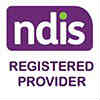A service-based business is just as the name suggests - the business owner sells skills rather than a product. This includes a range of business types, from plumbers and electricians, through to lawyers and hairdressers. It’s the type of business that relies a lot on customer relationships, as there is no product backing the company.
As such, it is essential that the business owner is able to offer their services to a broad range of clients, and that includes clients who are living with a disability. People who are living with a disability still require the services of a plumber, lawyer, banks, healthcare, and so on. And they need to feel as though they are just as important as any other customer you might have – simply because they are.
When working out of an office or clinic, you want to ensure your workplace is accessible.
What Is Expected?
As with any business, there are factors that should be adhered to, and those which must legally be compliant. Here’s what you can expect as a service-based business:
Accessible parking and entry. If you have a car park at your business, you need to ensure you have an accessible parking space as close to the entry as possible. This should be clearly marked with the wheelchair symbol, and it should have sufficient space on either side for wheelchair ramps and access. The doors at the entry should also be wide enough to fit a wheelchair.
Facilities should be well marked. From the wheelchair-accessible toilets, to the lift buttons, you should ensure all facilities have sufficient signage. Inside the washroom, make sure you have handrails, that the sink is low enough to reach while seated, and that there is an emergency button or cord should it be required.
Seating should be abundant and varied. Depending on the type of business you are operating, if you have a foyer or waiting room, you need to ensure there is ample space for wheelchairs, mobility scooters, people on crutches, and so on.
Tips To Enhance Your Accessibility
There are many ways in which you can enhance your accessibility, and in return, attract a broader range of clients, including the following:
- Ensure your accessible parking spaces, doorways, bathrooms, and so on are all clearly marked
- Have a low-level reception counter that doesn’t have any clutter on it
- Ensure any steps or corners are clearly marked with bright colours
- Keep walkways and aisles free from clutter, trees, bushes, and other hazards
- If doors are hard to open, replace them with doors that are easier access
- Allow service animals into your premises
- If you have forms that need to be completed, such as privacy statements and consent forms, ensure you have these in large print for those who might have a sight impairment
- Have an emergency evacuation plan in place to cater for and include people who are living with a disability
- If your customer has a companion with them for assistance, talk to the customer themselves, not the companion – unless you have been directed otherwise
- Educate your staff so they are able to interact with customers who are living with a disability effectively
Finally, if your business premises are not wheelchair friendly, try to provide other options to wheelchair users, such as online services.
Ultimately, the more accessible your business is, the more customers you are going to attract. Not only do you have access to a larger number of potential clients, but it can also enhance your standing within the local community if you are shown to be supportive of everyone.
Read our full guide to accessibility and download our checklist now!






-min.jpg?width=720&name=The%20position%20of%20a%20pelvic%20belt%20%E2%80%93%20the%20secret%20is%20in%20your%20hands%20image%20(1)-min.jpg)
